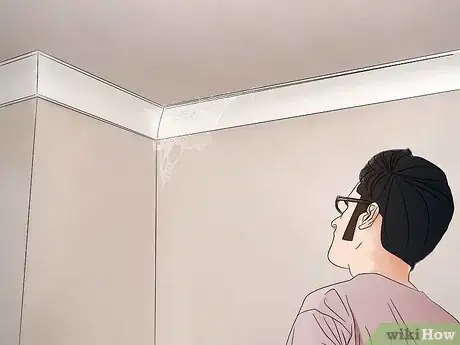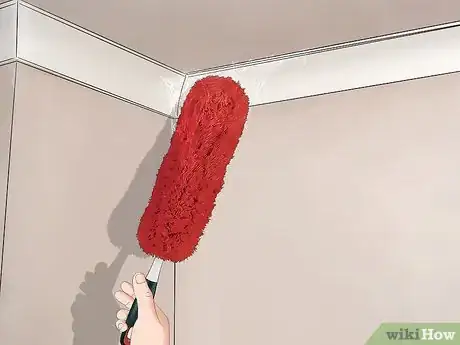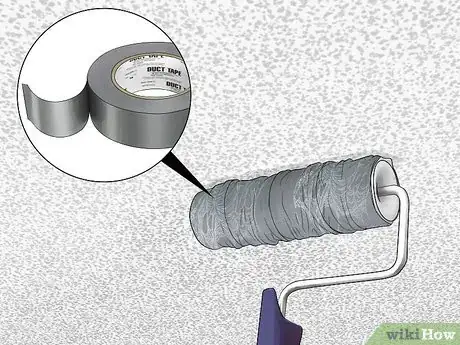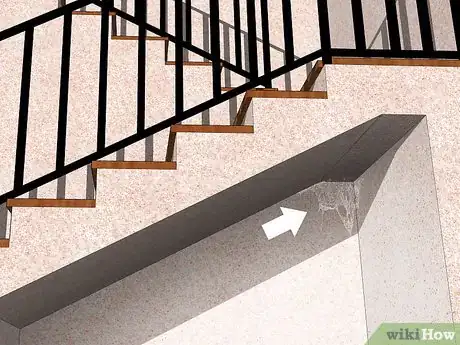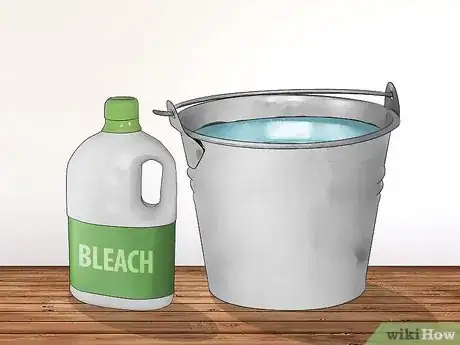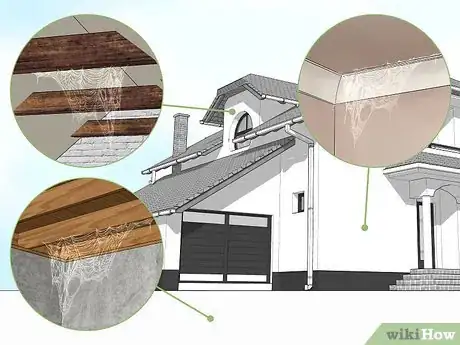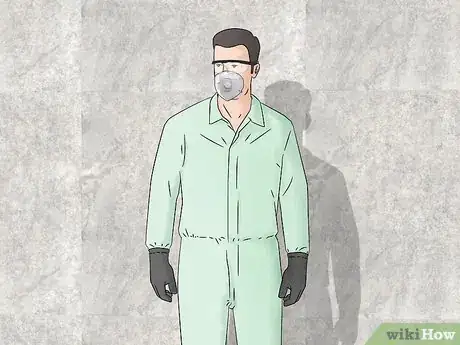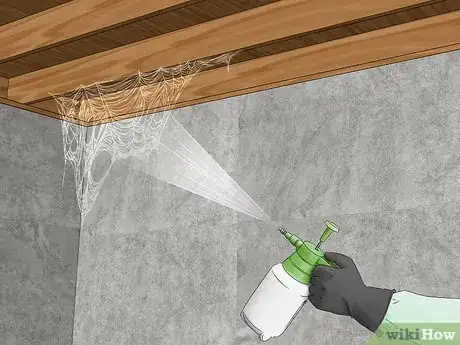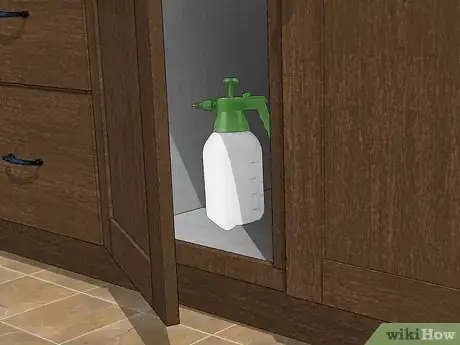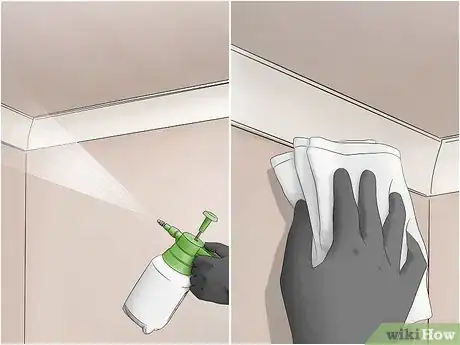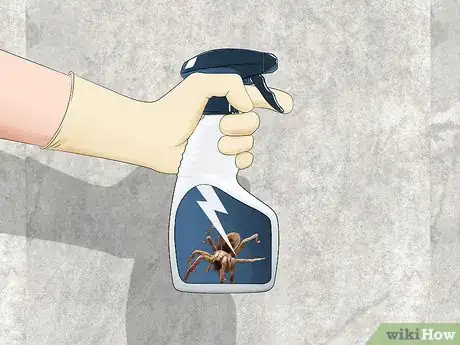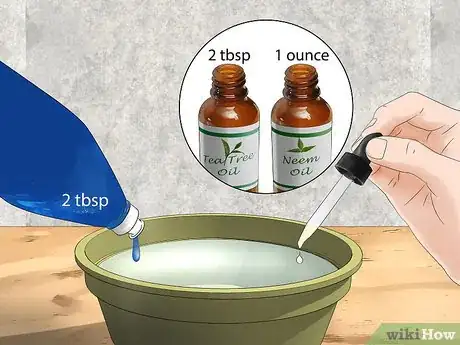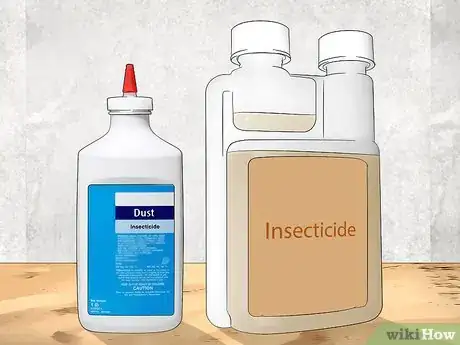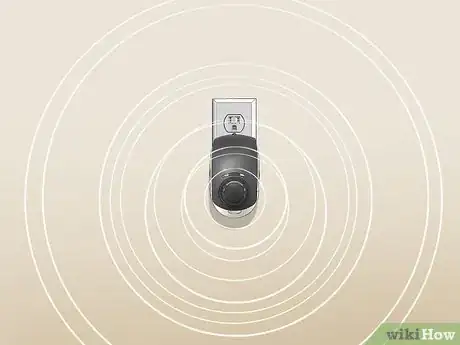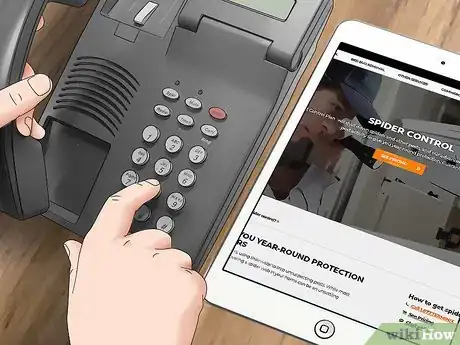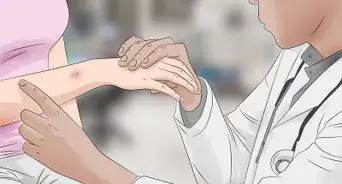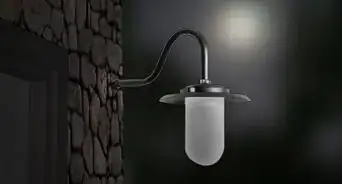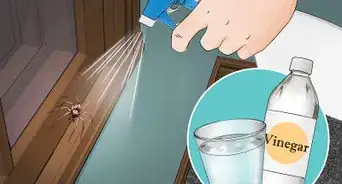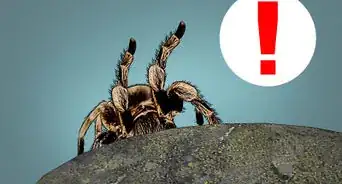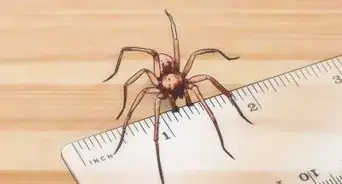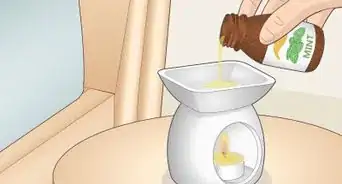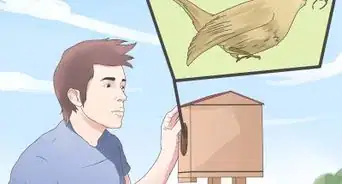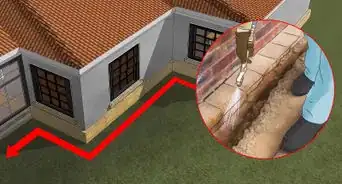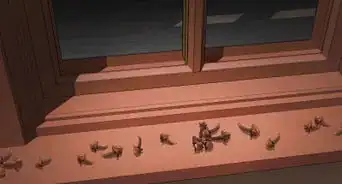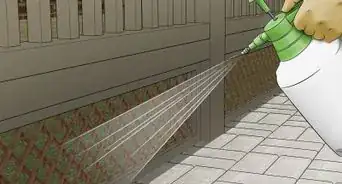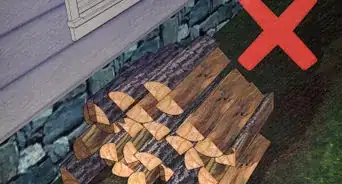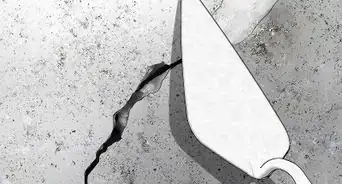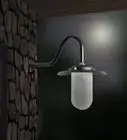This article was co-authored by Hussam Bin Break. Hussam Bin Break is a Certified Commercial Pesticide Applicator and Operations Manager. He and his brother Hussam co-founded Diagno Pest Control in the greater Philadelphia area in 2018, and have since expanded their services to include the New Jersey market. Diagno Pest Control has received Home Advisor's Top Rated and Elite Service Badges for quality of work and customer service.
There are 7 references cited in this article, which can be found at the bottom of the page.
wikiHow marks an article as reader-approved once it receives enough positive feedback. In this case, 87% of readers who voted found the article helpful, earning it our reader-approved status.
This article has been viewed 711,968 times.
Since a lot of people suffer from arachnophobia, getting rid of spider webs can be frightening. Fortunately, there are ways of getting a web out of nooks and crannies without the surprises and scares. You can use a vacuum cleaner for home removal and bleach and water to remove webs outdoors.
Steps
Removing Webs with Household Supplies
-
1Watch for webs during your daily cleaning. Spider webs should be removed as you see them. This can help spiders from infesting your home. As you move through your day-to-day cleaning, be on the lookout for webs. Make a note of any webs you see to clean later on.
-
2Remove webs using a vacuum. The best means to remove spider webs is by simply using a vacuum. A handheld vacuum would be easiest to maneuver. However, if you don't have a handheld vacuum you can also use a vacuum with an extension nozzle.
- Simply use the nozzle or handheld vacuum to suck up any webs you see. If webs are stuck in, you may have to go over the area quite a few times.[1]
- If you notice any cobwebs on furniture or curtains, vacuum over them. Then, use a lint roller to remove any leftover bits of web.[2]
- Be sure to check under furniture. Some types of spiders may make webs in dark areas. Once a week, flip over your couches, chairs, tables, and other items of furniture to check for webs. If you notice any webs, vacuum them up.
Advertisement -
3Use a soft duster with a handle for hard-to-reach places. Some places may be difficult to reach with a vacuum cleaner. Any nooks or crannies you cannot reach with a vacuum can be cleaned using a soft duster with a handle. If you don't have one, use a rubber band to secure an old sock to the end of a yard stick or ruler. You can then use this tool to remove webs.[3]
-
4Use duct tape and a paint roller on speckled ceilings. Speckled ceilings, also known as popcorn ceilings, can be difficult to clean. Spider webs on these kinds of ceilings can be frustrating to remove. Using duct tape can be a good trick. Take a regular paint roller and wrap duct tape around it, with the sticky side of the tape facing outward. Then, roll this over your speckled ceiling in order to remove cobwebs. It may take a few rolls to get the webs out completely.[4]
-
5Spray down windows and window screens. Spiders often make webs in the corners of windows, settling between the screen and window. If you want to remove spider webs from these places, follow guidelines often used for cleaning older windows. Spray down the window and screen with water. You can use either a hose or a spray bottle.
- If you're spraying from outside, a garden hose with a spray nozzle attached can be sprayed onto the window. You can spray into the screen, aiming at the unwanted spider webs. If you're spraying inside, just use a standard spray bottle.[5]
- Remove the screen and use a smaller spray bottle to dislodge any remaining spider webs. From there, clean the windows with your chosen cleaning supplies. You can use window sprays you would buy at a local department store or simply use soap and water. Clean the window thoroughly, making sure to remove any remaining residue from the spider webs.[6]
- To prevent reoccurrence, replace screens that have cracks and tears in them. This will stop spiders from getting into your home to begin with.
-
6Double check hard-to-reach spots of your home for webs and egg sacs. Go over the nooks and crannies in your home. Double check for spider webs or infestations in these places. If you live in an area where poisonous spiders are a hazard, you want to make sure your home is free of webs. The best way of preventing spider infestations is catching them before they start.[7]
Using Bleach
-
1Prepare a mixture of bleach and water. You can also use a combination of bleach and water to address spider webs. This is best used for live webs rather than cobwebs. This will get rid of spider eggs and kill any spiders still living in them.
- You can buy bleach at a local department store or online. Make sure to read any instructions provided before use. Always dilute bleach with water to the levels recommended on the container. For most homes, one gallon of bleach is all you'll need.
- If you're spraying bleach outside, you'll need to purchase some kind of bleach sprayer. You can do so online or at a local department store. You also may need a garden hose or adjustable spray nozzle.
- If you're bleaching in your home, a big sprayer might have too much force. You can simply mix bleach and water in a small handheld spray bottle. Make sure to wear protective gloves when handling bleach. It can be corrosive to skin.[8]
- Always mix bleach with lukewarm or cold water, not hot water, which can cause the release of harmful chlorine gas. Never mix bleach with other household chemicals.[9]
-
2Survey your home for webs. Before you begin the process, survey your home for webs. This will help you determine where you need to spray or wash.
- When spraying outside, you should spray in 10 to 15 square foot sections. Look for areas that contain spider webs and decide how to break your home into sections.[10]
- Watch out for things like exterior light fixtures or electronic components of your house. You should make sure you don't damage such areas of your home with bleach. You can try to manually remove spiders with a cleaning brush if you notice webs in such areas.[11]
-
3Put on protective gear. As bleach can be harmful to skin and eyes, you'll need to put on protective gear before you begin spraying. You should have protective clothing, goggles, and gloves.[12]
-
4Spray the webs. Pump the sprayer towards areas infected by spider webs. Your sprayer's settings should allow you to spray bleach somewhere between a solid stream and a gentle mist. You might want to test the sprayer on sidewalk or cement before using it on your home.[13]
-
5Store leftover bleach safely. Once you've sprayed down any webs you found in your home, store the leftover bleach safely. Keep it in a secure container away from children and animals. Manufacturer's instructions should provide details on how to store or dispose of bleach safely.[16]
-
6Spray bleach inside. When cleaning with bleach in your home, make sure to let the bleach sit for a minute after spraying it on a web or infested area. Then, wipe the web or egg sacs away with a towel and spray on another layer of bleach. It's best to let the bleach air dry after applying it rather than recontaminating the area with a towel.[17]
- Keep children and pets away from areas in your home that you bleached recently.
- If you feel dizzy, open the windows to provide ventilation.
Preventing a Reoccurrence
-
1Try sprays. If you have a spider infestation in your home, basic spider killer sprays can be purchased to treat the infection. These are usually used outside the home. You spray the perimeters of your home, as well as any cracks or crevices spiders may use to enter your house.[18]
- Choose a spray at a local department store. You should know the basic build of your home before going in so you know what sprays are safe for your house.
- Go around the perimeter of your home. Spray around the house's foundation. Also, look for potential entryways for spiders. Pay special attention to cracks in windowsills and garage entryways.[19]
- Specifics regarding safe use depend on the type of spray you're using. The bottle or package should provide safety instructions. Always read these carefully before using any spider sprays.
-
2Use essential oils. If you're wary about using chemicals around your home, essential oils can help. Try creating a mixture using essential oils and see if you notice a difference.
- Spiders tend to dislike the taste of essential oils. You can purchase essential oils online or at a local health store. For best effect, use neem oil and tea tree oil.[20]
- Mix about two tablespoons of dish soap into warm water. Then, add 5 drops of tea tree oil and an ounce of neem oil.[21]
- Sprinkle this mixture around your home in areas where you've noticed spiders.[22] Be careful, however. Make sure you do not leave the spray close to children or pets. Tea tree oil can be harmful if swallowed.
-
3Look into insecticides. There are a variety of insecticides you can use to ward off spiders. Stop by your local hardware store and review your options.
- Dust insecticides are best used if you're treating cracks and crevices. They can be easily applied to hard-to-reach places in your home.[23]
- Powder insecticides work best for spot treatment. If you've only seen spiders in a few spots in your home, consider a powder insecticide.[24]
- If you're trying to create a boundary around your home, look into a liquid insecticide. They are usually mixed with water and then used to cover large areas around the home.[25]
- As always, make sure to carefully review safety instructions of any products you buy prior to use.
-
4Try out an electronic repellant. Many people feel more comfortable with electronic repellants as they don't involve spraying your home. Electronic repellents generate electromagnetic waves that repel spiders and other pests. You can find them online or at a hardware store. Read product reviews carefully before making a purchase, however, to make sure the repellent works for most people.[26]
-
5Get professional help, if necessary. If you have a serious spider infestation, you may not be able to treat it on your own. In this case, you should hire a professional exterminator. You should be especially proactive about this if you live in an area where poisonous spiders are common.
Expert Q&A
-
QuestionDo spider repellents really work?
 Hussam Bin BreakHussam Bin Break is a Certified Commercial Pesticide Applicator and Operations Manager. He and his brother Hussam co-founded Diagno Pest Control in the greater Philadelphia area in 2018, and have since expanded their services to include the New Jersey market. Diagno Pest Control has received Home Advisor's Top Rated and Elite Service Badges for quality of work and customer service.
Hussam Bin BreakHussam Bin Break is a Certified Commercial Pesticide Applicator and Operations Manager. He and his brother Hussam co-founded Diagno Pest Control in the greater Philadelphia area in 2018, and have since expanded their services to include the New Jersey market. Diagno Pest Control has received Home Advisor's Top Rated and Elite Service Badges for quality of work and customer service.
Pest Control Professional You can kill spiders with over-the-counter sprays like Raid, but they only work if the spray comes into direct contact with the spider. They don't have any residual effects.
You can kill spiders with over-the-counter sprays like Raid, but they only work if the spray comes into direct contact with the spider. They don't have any residual effects.
Warnings
- Although all spiders are venomous, most are harmless to humans. The small amount of venom they carry is usually too little to hurt a human, and most species are extremely docile and unlikely to bite in the first place. However, some spiders such as the Black Widow, Brown Recluse, Redback, Funnel Web, etc. can be dangerous to humans. Identify any unfamiliar spiders you encounter and avoid close contact with species that might be dangerous.⧼thumbs_response⧽
References
- ↑ http://www.maids.com/blog/a-sticky-situation-getting-rid-of-cobwebs/
- ↑ http://www.maids.com/blog/a-sticky-situation-getting-rid-of-cobwebs/
- ↑ http://www.maids.com/blog/a-sticky-situation-getting-rid-of-cobwebs/
- ↑ http://www.thriftyfun.com/Cleaning-a-Textured-Popcorn-Ceiling.html
- ↑ https://www.agardenforthehouse.com/how-i-clean-my-victorian-windows/
- ↑ https://www.agardenforthehouse.com/how-i-clean-my-victorian-windows/
- ↑ http://www.maids.com/blog/a-sticky-situation-getting-rid-of-cobwebs/
- ↑ http://www.home-ec101.com/how-to-use-bleach-safely/
- ↑ http://www.home-ec101.com/how-to-use-bleach-safely/
- ↑ http://www.sleewee.com/remove-spider-webs.php
- ↑ http://www.sleewee.com/remove-spider-webs.php
- ↑ http://www.sleewee.com/remove-spider-webs.php
- ↑ http://www.sleewee.com/remove-spider-webs.php
- ↑ http://www.sleewee.com/remove-spider-webs.php
- ↑ http://www.sleewee.com/remove-spider-webs.php
- ↑ http://www.sleewee.com/remove-spider-webs.php
- ↑ http://www.home-ec101.com/how-to-use-bleach-safely/
- ↑ http://pestkill.org/insect/spiders/repellent/
- ↑ http://pestkill.org/insect/spiders/repellent/
- ↑ https://jojotastic.com/2018/08/06/essential-oils-for-spider-repellent/
- ↑ http://pestkill.org/insect/spiders/repellent/
- ↑ http://pestkill.org/insect/spiders/repellent/
- ↑ http://pestkill.org/insect/spiders/repellent/
- ↑ http://pestkill.org/insect/spiders/repellent/
- ↑ http://pestkill.org/insect/spiders/repellent/
- ↑ http://pestkill.org/insect/spiders/repellent/
About This Article
To remove spider webs, use the nozzle attachment on a vacuum to suck up any webs you might find. For hard-to-reach places, like behind furniture, around tight corners, or above cabinets, use a soft duster with a long handle. Additionally, you can also create your own duster by securing an old sock to the end of a yard stick with a rubber band. If you need to remove webs from windows and screens, use a hose or spray bottle to knock the webs out. To learn how to use bleach to remove spider webs, keep reading!
